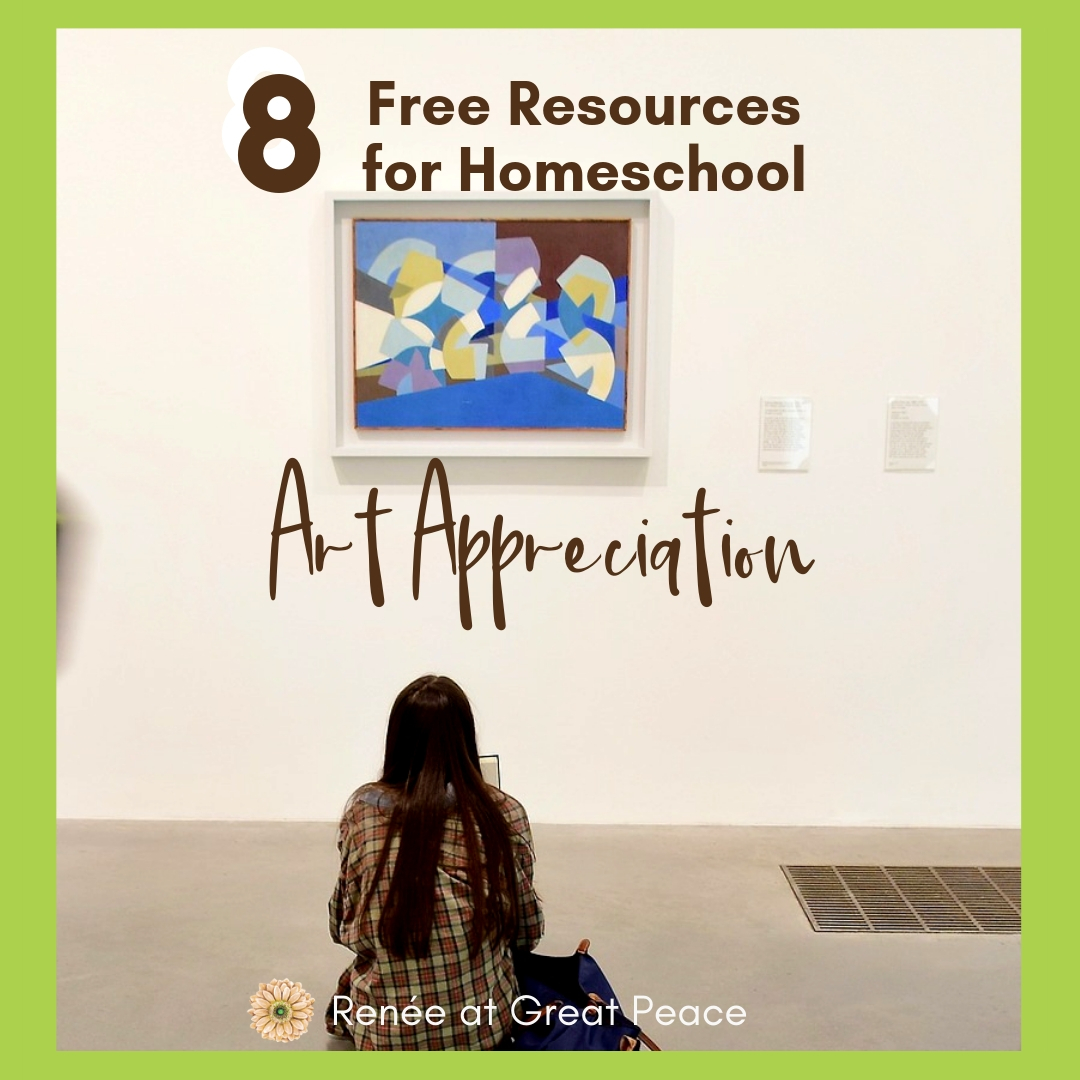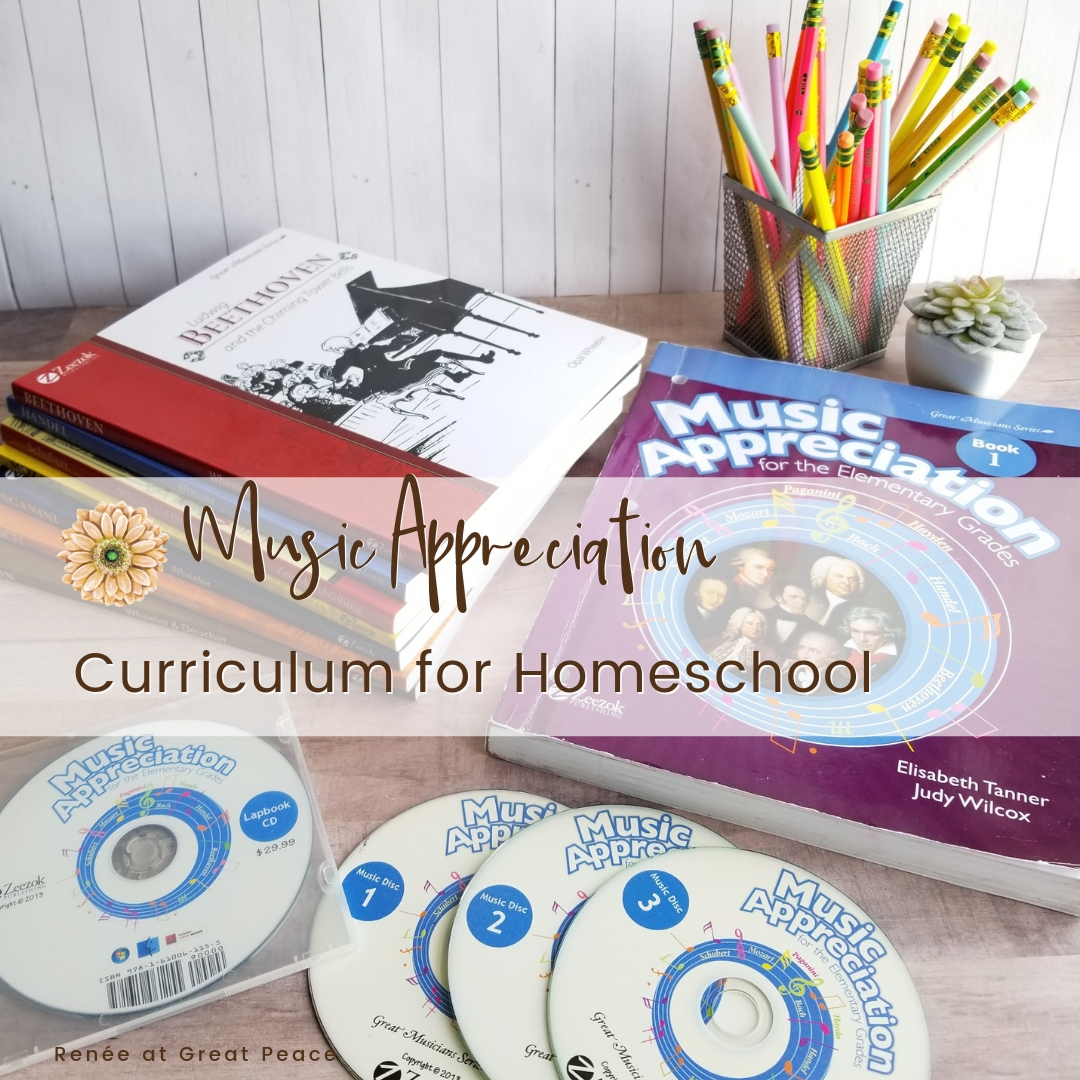
8 Free Resources for Teaching Art Appreciation in Homeschool
Art appreciation can seem like a foreign field for parents who are homeschooling their kids. This could be because visual arts were not given high priority in the school systems we grew up in. But the reality is art appreciation isn’t as scary as it might seem.
You can incorporate art appreciation as a unit study with history acting as the spine of the study. Or, you can choose to focus on art as it’s own subject for a quarter or two during the year.
The key is to not be afraid to introduce art to your kids, but rather let them explore a variety of art in a variety of ways. Allow them to learn both from studying books, visual exploration, and giving it a try with their own hands-on art.
This post contains affiliate advertisement links.
And, what’s better is you don’t have to spend a lot of money to teach art appreciation in your homeschool. Actually, you can teach art appreciation for free. I’m sharing 8 resources for teaching art appreciation in your homeschool.
8 Free Art Appreciation Resources
This peer populated platform provides a wealth of resources for educators to use as a springboard for teaching art history in your classrooms. As Homeschoolers we can make use of the lesson plans to cover art history from ancient history to modern times.
Google has created an amazing resource of art and culture with online exhibits, amazing videos and images from around the globe. And because it’s Google you can take your time and explore at your own pace.
You know we use, exclusively, Khan Academy for math instruction. But, Khan Academy offers classes, lessons in all the needed subjects including the humanities. I’ve utilized the resources there for art appreciation, as well as music appreciation.
This resource has art history broken down into eras making it easy to incorporate art studies into your homeschool history studies. You’ll love how comprehensive it is in it’s scope. That said, keep in mind it’s a site dedicated to listing resources. Which means, you have to click through a lot of links to find what you want to use.

The Metropolitan Museum of Art
The MET has combined five decades of their own art publications into an online resource that you can utilize. You are able to search, read, and even download for free!
The National Gallery is a publicly funded site which means their resources are available for citizens to utilize. You’ll discover collections which are featured in the public domain. Meaning, you can use the resources for teaching art in your homeschool without worry about copyright violation.
This site offers an array of art from a variety of genres, styles, and mediums to explore. This is a great site to explore modern art as well as learning what influences art today.
The Smithsonian Art Learning Lab
Another publicly sourced site The Smithsonian Learning Lab offers a way for students to discover, create, share and learn online. They have vast collections of art to peruse at your own pace and you’ll find that it’s an easy to use platform as well.
Of course, with any site that teaches art history, homeschooling parents will want to preview and use caution when determining if samples & lessons are right for your children.
And, as always, don’t forget to check resources with your local library! They generally have a wealth of materials available all with the use of your free library card.

You don’t have to be an accomplished artist to appreciate beautiful art. Actually, you don’t even have to, ahem, like art, to teach your kids to appreciate it. You simply need to find the right resources and introduce them to a wide array of art styles and see what they find pleasing, what they gravitate toward. Then, let them explore their own interests in the field of visual arts.
What ways are you incorporating art appreciation into your homeschool? Share your favorite resources and tips in the comment section below.
Be sure to check out these Homeschooling Fine Arts posts as well.
- Why Art Appreciation Starts with Hands-On Art
- How to Teach Art in Homeschool
- Art Supplies to Keep on Hand for Creative Thinking Kids







